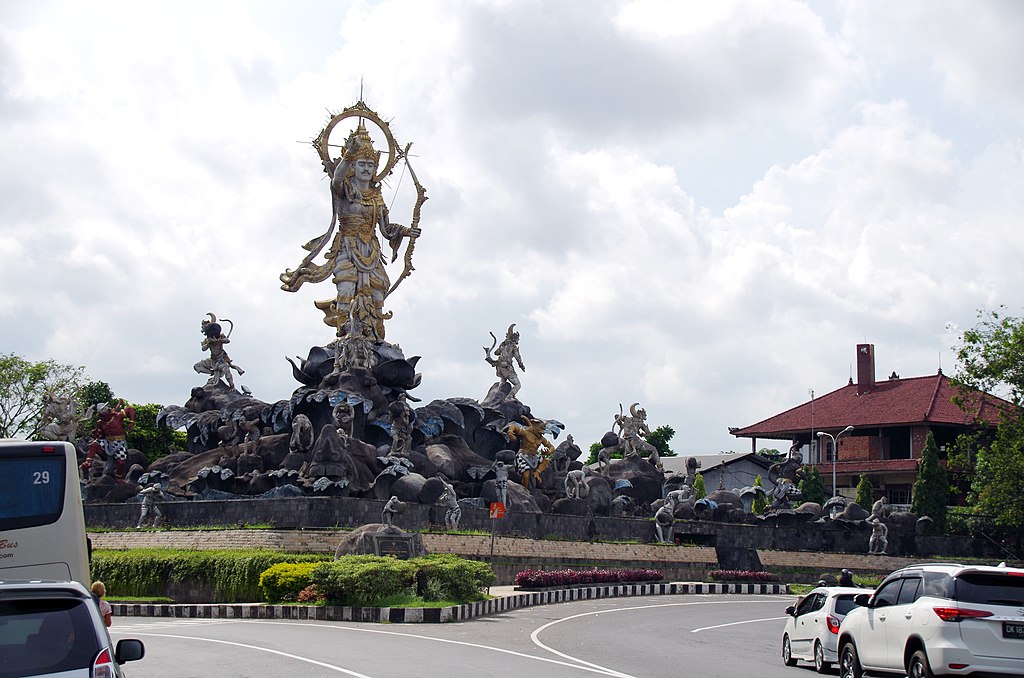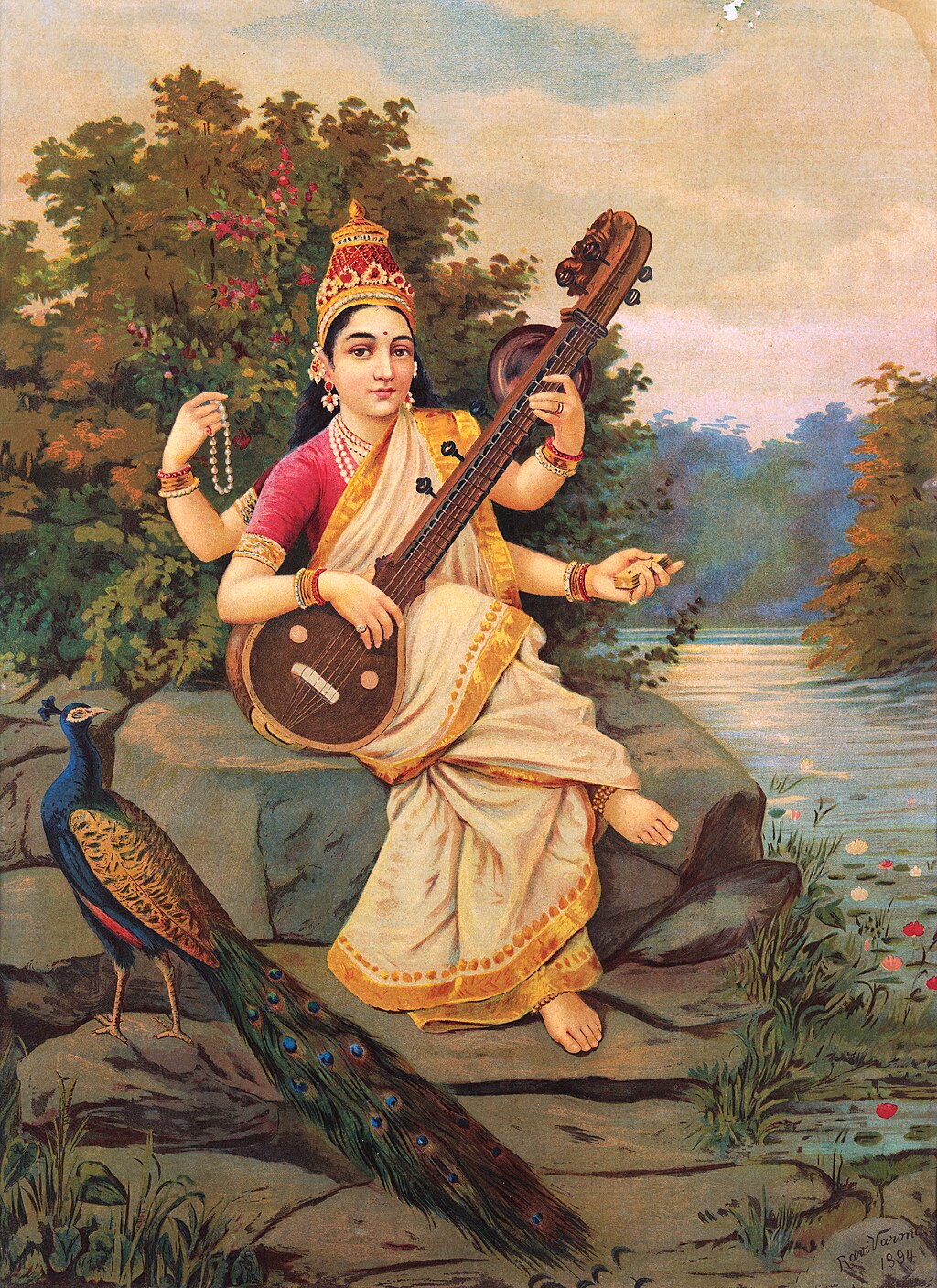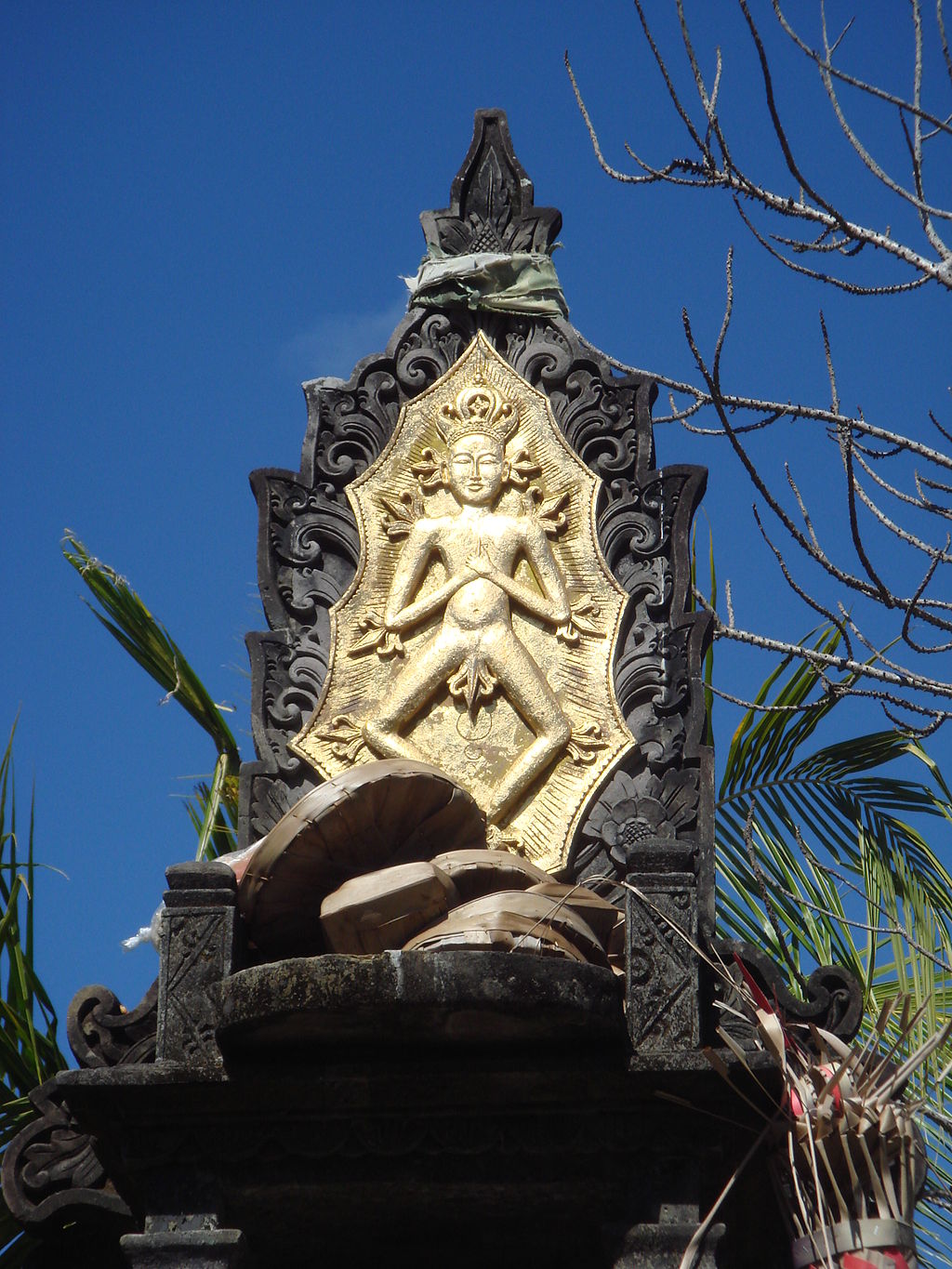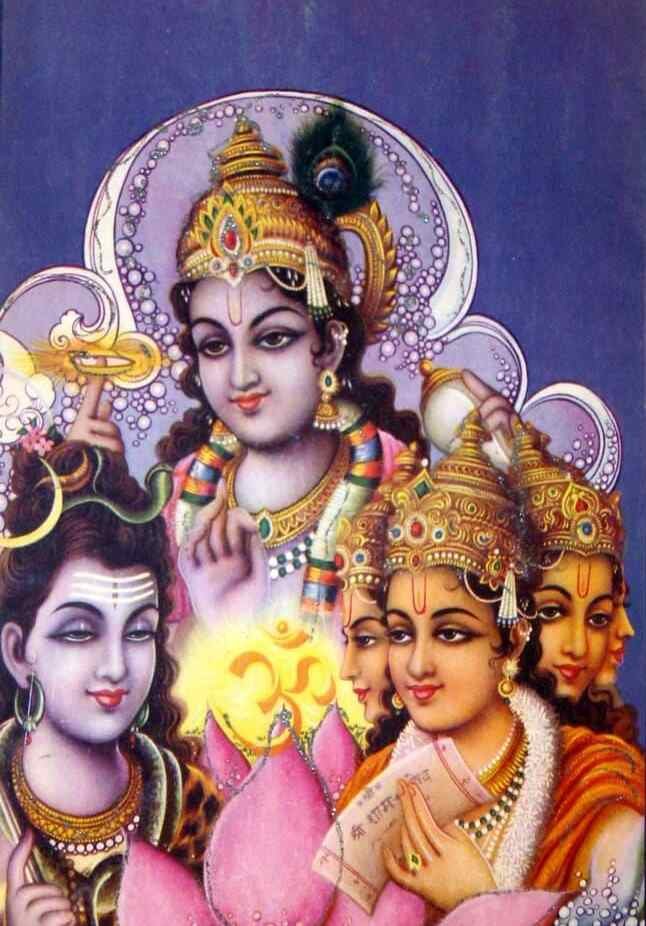Bali’s Divine Balance and Harmony: Nurturing Balance Through Hindu Gods and Goddesses in Bali
Hindu gods and goddesses in Bali play a central role in Balinese culture and religion. The Balinese believe that the gods and goddesses are present in all things, and that they can be invoked for help and guidance. They also believe that the gods and goddesses play an important role in maintaining balance and harmony in the world.
In Bali, a rich tapestry of Hindu gods and goddesses weaves through the vibrant culture, influencing daily life, rituals, and festivals. Let’s delve into the divine pantheon celebrated on the Island of the Gods:
Balinese Beliefs and Harmony
The Balinese believe that gods and goddesses reside in all things, fostering balance and harmony. Regular offerings, festivals, and rituals play a pivotal role in expressing devotion and ensuring the well-being of the community.
The most important Hindu gods worshipped in Bali are:
Brahma (the creator god), Vishnu (the preserver god), and Shiva (the destroyer god). Other popular Hindu gods and goddesses worshipped in Bali include Saraswati (the goddess of knowledge and the arts), Lakshmi (the goddess of wealth and prosperity), Ganesha (the elephant-headed god of wisdom and good luck), Hanuman (the monkey god of strength and courage), Agung (the mountain god), Danu (the water goddess), and Baruna (the sea god).
Best Temples in Bali | You need to visit one of them at least once during your stay in Bali
Exploring the Hindu Pantheon in Bali: Gods and Goddesses of Harmony
Bali, known as the “Island of the Gods,” is adorned with a cultural tapestry intricately woven with the threads of Hindu deities.
The pantheon, a diverse array of gods and goddesses, reflects this harmonious fusion. Each deity embodies specific qualities and is revered for their role in maintaining balance and order in the cosmos.
In Bali, a rich tapestry of Hindu gods and goddesses weaves through the vibrant culture, influencing daily life, rituals, and festivals. Let’s delve into the divine pantheon celebrated on the Island of the Gods.
Religion in Bali: Cultures of Indonesia – Unity in Diversity
The main Hindu gods and goddesses worshipped in Bali are:
1. Brahma: The Creator God, He’s is the one who creates everything
Brahma, with four faces symbolizing the cardinal directions, is revered as the creator god, shaping the universe.
The Brahma is the creator god of Hinduism. He is often depicted with four faces, which represent the four directions of the world. Brahma is responsible for shaping the universe and creating all life. He is also known as the god of knowledge and wisdom.
In Bali there is Andakasa Temple dedicated to Brahma.

Four Faced Brahma Statue, Singaraja, Bali. DayakSibiriak, CC BY-SA 4.0, via Wikimedia Commons
2. Vishnu: The Preserver God, He’s the one who protects everything
Vishnu, depicted with four arms, stands as the preserver god, safeguarding the cosmic order and harmony.
The Vishnu is the preserver god of Hinduism. He is often depicted with four arms, which represent his four main qualities: dharma (righteousness), artha (prosperity), kama (pleasure), and moksha (liberation). Vishnu is responsible for maintaining the cosmic order and harmony. He is also known as the god of compassion and love.

Giant Vishnu statue in Garuda Wisnu Kencana Cultural Park – Bali. Carmelrmd, CC BY-SA 3.0, via Wikimedia Commons
3. Shiva: The Destroyer God, He’s the one who destroys and renews everything.
Shiva, with a third eye and a trident, embodies the transformative forces of destruction and renewal.
The Shiva God is the destroyer god of Hinduism. He is often depicted with a third eye, which represents his ability to see the past, present, and future. Shiva is responsible for destroying the old and making way for the new. He is also known as the god of transformation and renewal.
The three gods are often seen as a trinity, representing the three main aspects of the universe: creation, preservation, and destruction. They are also seen as complementary, with each god playing an important role in maintaining the balance of the universe.

Shiva statue or Patung Titi Banda in Denpasar – Bali. Balou46, CC BY-SA 4.0, via Wikimedia Commons
Other popular Hindu gods and goddesses worshipped in Bali include:
Saraswati: The Goddess of Knowledge and Arts
Saraswati, the graceful deity playing the veena, is worshipped for wisdom, knowledge, and artistic pursuits.
The Saraswati, a prominent figure in Hindu mythology, is revered as the goddess of knowledge and arts. Associated with wisdom, music, and nature, she holds a special place in the female trinity alongside Lakshmi and Parvati. Saraswati’s influence extends beyond India, reaching Southeast Asian countries like Cambodia, Bali in Indonesia, and even Japan, where she is known as Benzaiten in temples. Often depicted with a lotus and a swan, these symbols connect knowledge with the concepts of karma and moksha.

Hindu deity Sarasvati (Saraswati) is the Hindu goddess of knowledge, music, arts, wisdom, and nature. She’s part of the female trinity along with Lakshmi and Parvati. Saraswati is revered in southeast Asian countries like Cambodia, Bali, Indonesia, and in Japan where she’s known as Benzaiten. Depicted with a lotus and swan, she symbolizes the connection between knowledge, karma, and moksha. Raja Ravi Varma, Public domain, via Wikimedia Commons
Lakshmi (Dewi Sri): The Goddess of Wealth and Prosperity
Lakshmi, often portrayed with four arms, bestows blessings of wealth and prosperity upon devotees.
Lakshmi, a prominent figure in Hindu mythology, is hailed as the Goddess of Wealth and Prosperity. Devotees seek her blessings for financial abundance, success, and well-being. Lakshmi is often depicted with symbols of prosperity, such as a lotus flower and overflowing coins, symbolizing her ability to bring material and spiritual wealth. Hindus celebrate festivals like Diwali to honor Lakshmi and invite her blessings into their homes for a prosperous and harmonious life.

Ganesha: The Elephant-Headed God of Wisdom
He’s the remover of obstacles, is revered for wisdom, intellect, and good fortune.
Ganesha, the Elephant-Headed God, is a beloved figure in Hindu mythology, revered for his wisdom and ability to remove obstacles. He symbolizes intelligence, good fortune, and new beginnings.

Ganesha statue in Ubud, Bali. Michelle Maria, CC BY 3.0, via Wikimedia Commons
Depicted with an elephant head and a human body, Ganesha is often worshipped at the start of endeavors to seek his blessings for success and a smooth journey. His endearing nature and association with learning make him a cherished deity in Hindu culture.

A large Ganesha temple in Menjangan – Bali, Indonesia. Oogstweg, CC BY-SA 3.0, via Wikimedia Commons
Hanuman: The Monkey God of Strength
Hanuman, the symbol of strength and devotion, is a heroic figure known for his unwavering loyalty.
He’s is a revered figure in Hinduism known for his strength, loyalty, and devotion. Depicted as a monkey-faced deity, Hanuman played a crucial role in the Indian epic Ramayana. He is admired for his unwavering dedication to Lord Rama, showcasing the virtues of courage and selfless service. Hanuman is a symbol of strength, resilience, and faith, making him a beloved character in Hindu mythology. Devotees seek his blessings for courage and protection in their endeavors.

The Monkey Warrior Hanuman (down) and the Mighty Eagle Jatayu (up) displayed at Departure Terminal, I Gusti Ngurah Rai International Airport (DPS), Bali. Johannnindito Adisuryo (Yohanes Nindito Adisuryo), CC BY-SA 4.0, via Wikimedia Commons
Agung: The Mountain God
The Agung is honored as the god associated with the majestic mountains that grace the Balinese landscape.
Agung, known as the Mountain God, holds significance in Balinese culture. The term “Agung” itself translates to “great” or “majestic” in Indonesian. The Balinese people, deeply connected to nature and the landscape, attribute spiritual significance to mountains, considering them as abodes of divine forces.
There are a few reasons why Agung is the mountain god in Bali:
- Is the highest mountain in Bali. It is a towering presence on the island and can be seen from many miles away. The Balinese believe that the mountain’s height makes it closer to the gods.
- Is an active volcano. The Balinese believe that the volcano’s power represents the power of the gods. They also believe that the volcano’s eruptions are a way for the gods to communicate with the people.
- Located in the center of Bali. The Balinese believe that the mountain’s central location makes it the sacred center of the island.
- Agung represents the awe-inspiring and sacred qualities associated with towering peaks. Mountains are often regarded as places of meditation and worship in various cultures, symbolizing a connection between the earthly and spiritual realms.
In addition to these reasons, Mount Agung is also associated with a number of Hindu myths and legends. For example, one legend says that Mount Agung was created by the god Brahma when he was separating the earth from the sky. Another legend says that Mount Agung is the home of the gods and that it is the place where the gods go to rest and meditate.
The worship of Mount Agung is an important part of Balinese culture and religion. The mountain god is seen as a powerful protector and is revered by the Balinese people.

Offering a breathtaking view, Agung stands majestically as observed from the Besakih temple situated at its base. Photo by CEphoto, Uwe Aranas (CC BY-SA 3.0) via Wikimedia Commons
Here is a quote from a Balinese priest:
“Mount Agung is the dwelling place of the gods. It is the most sacred place on Bali. We must respect the mountain god and keep him happy. If we do not, he will become angry and punish us.”
This quote shows how important Mount Agung is to the Balinese people and why they worship him as the mountain god.
The worship of Mount Agung is an important part of Balinese culture and religion. The mountain god is seen as a powerful protector and is revered by the Balinese people.
Danu: The Water Goddess
She’s the water goddess, is venerated for her connection to rivers, lakes, and the life-giving force of water.
Danu, revered as the Water Goddess, holds a special place in Balinese mythology.
In Balinese culture, people associate the term “Danu” with water, symbolizing its life-giving and purifying essence, and often regard water as sacred and essential for various rituals and ceremonies.
The Danu embodies the nurturing and sustaining qualities attributed to water, highlighting its importance in the balance of life and the interconnectedness of nature. The Balinese people, deeply rooted in their spiritual beliefs, recognize the vital role of water in their traditions and its representation through the divine persona of Danu.

Statues of Dewi Danu at Bratan Hindu temple in Bali. Photo by CEphoto, Uwe Aranas (CC BY-SA 3.0) via Wikimedia Commons
Baruna: The Sea God
The Baruna reigns over the seas, embodying the vast and powerful nature of the ocean.
Baruna, known as the Sea God in Balinese mythology, is a revered deity associated with the vast and powerful ocean. In Balinese culture, where the sea plays a crucial role in daily life, Baruna holds a significant place as a guardian and ruler of the maritime realm. The name “Baruna” itself is indicative of the god’s connection to the sea.
Balinese people, especially those engaged in fishing and seafaring activities, seek the protection and blessings of Baruna for safe journeys, bountiful catches, and overall well-being. The Sea God, with his mythical presence, symbolizes the dynamic and sometimes unpredictable nature of the ocean, reflecting both its ferocity and its role as a source of livelihood for coastal communities. In various ceremonies and rituals related to the sea, offerings and prayers are dedicated to Baruna, acknowledging the divine influence he holds over the waters surrounding Bali.

Baruna (Varuna) on his mount Makara (is a legendary sea-creature in Hindu mythology. In Hindu astrology, Makara is equivalent to the Zodiac sign Capricorn). See page for author, Public domain, via Wikimedia Commons
Local Deities: Guardians of Nature and Beyond
The Balinese also pay homage to local deities, such as Hyang Widhi Wasa, Batara Kala, Nini Luh Masceti, and Ida Bhatara Dalem, each contributing to the island’s spiritual tapestry. The Balinese also worship a number of local deities, such as:
Hyang Widhi Wasa: The supreme god, who is the source of all creation
Hyang Widhi Wasa, the supreme god in the Balinese pantheon, is revered as the ultimate source of all creation. Balinese Hindus believe that Hyang Widhi Wasa is the divine force behind the universe, guiding and sustaining all life.
Achintya is the Supreme God in Indonesian Hinduism, mainly in Bali. It means “the inconceivable” or “the unimaginable” in Sanskrit. Also called Sang Hyang Widhi Wasa or Sang Hyang Tunggal, it represents “The Divine Order” in Balinese. Achintya is like the Indian Hindu concept of Brahman. In Balinese Hinduism, all gods, goddesses, and existence are thought to be forms of Achintya.

Hyang Widhi Wasa. PHGCOM, CC BY-SA 3.0, via Wikimedia Commons
Batara Kala: The god of time and death
Batara Kala holds a significant role as the god of time and death. Balinese people recognize the cyclical nature of time, and Batara Kala is considered both a keeper of temporal order and a guide in the transitions between life and death.
Javanese and Balinese mysticism refers to numerous “regional” deities, the best known of them being Kajeng Ratu Kidul, the queen of an underwater kingdom which extends from western Java to Bali.
Batara Kala is a creature sent to punish humans, and who began to devour them. It is a deity that represents death itself, through time, a destructive and inevitable time.

Shadow figure. Wayang doll, representing Batara Kala. Tropenmuseum, part of the National Museum of World Cultures, CC BY-SA 3.0, via Wikimedia Commons
Nini Luh Masceti: The goddess of the forest
Nini Luh Masceti is the cherished goddess of the forest, embodying the lush and sacred realms of Bali’s natural landscapes. Balinese communities revere her as a protector of biodiversity and the serene beauty found within the island’s verdant woodlands.
Nini Luh Masceti is worshipped by the Balinese people, who make offerings to her and participate in religious ceremonies that are dedicated to her. She is a popular deity among farmers and forest workers, who pray to her for good harvests and protection.
She’s often depicted as a beautiful woman with long black hair and flowing white robes. She is often shown surrounded by animals and plants. She is sometimes also shown carrying a basket of fruit or flowers.
Nini Luh Masceti is a benevolent goddess who is associated with the following themes:
- Nature: Nini Luh Masceti is the goddess of the forest and nature. She is associated with all living things, including plants, animals, and humans. She is also associated with the natural elements, such as the earth, air, water, and fire.
- Fertility: Nini Luh Masceti is the goddess of fertility. She is worshipped by women who seek her help in getting pregnant and having healthy children. She is also associated with the fertility of the land and the abundance of crops.
- Healing: Nini Luh Masceti is also a goddess of healing. She is worshipped by people who are sick or injured and who seek her help in getting better. She is also associated with the healing properties of plants and herbs.
Nini Luh Masceti is a popular figure in Balinese culture. She is often depicted in Balinese art and architecture. There are also many temples and shrines dedicated to her throughout the island.
Here are some examples of how Nini Luh Masceti is worshipped in Bali:
- Nini Luh Masceti Pujawali: Nini Luh Masceti Pujawali is a major festival that is celebrated in Bali to honor Nini Luh Masceti. The festival lasts for three days, and it is marked by elaborate rituals and ceremonies.
- The Nini Luh Masceti Yatra: Nini Luh Masceti Yatra is a procession that is held in Bali to carry the statue of Nini Luh Masceti from one temple to another. The procession is followed by a feast and a cultural performance.
- Nini Luh Masceti Dance: Nini Luh Masceti Dance is a traditional Balinese dance that is performed to honor Nini Luh Masceti. The dance is performed by women who wear elaborate costumes and masks.
Nini Luh Masceti is a powerful and benevolent goddess who is worshipped by Hindus all over the world. She is a symbol of nature, fertility, and healing.
Ida Bhatara Dalem: The god of the underworld
Ida Bhatara Dalem governs the mystical realm of the underworld in Balinese cosmology. As a god with profound influence beyond the visible world, Ida Bhatara Dalem is both respected and invoked in spiritual practices, acknowledging the interconnectedness of life and the unseen forces shaping existence.
Ida Batara Dalem is often depicted as a fearsome-looking face and a large beard. He is usually dressed in black robes, and he carries a keris, a traditional Balinese dagger.
The Ida Bhatara ceremony is a Balinese Hindu tradition to honor ancestors during the Galungan festival. Families create offerings of food and flowers on a shrine called the bhatara temple, believed to connect to the spiritual realm. Led by a priest, prayers and rituals are performed to invoke ancestral presence. The ceremony, held twice a year, fosters family unity, respects ancestors, and seeks their guidance and protection in Balinese culture.
Dewi Durga: Goddess of Strength and Protection
The name Durga (दुर्गा) means “impassable,” signifying invincibility and being unassailable.
Dewi Durga, often referred to as Durga, is a powerful goddess in Hinduism. The name Durga means “impassable” or “invincible.” She is considered a warrior goddess, symbolizing strength and protection. Dewi Durga is often depicted riding a lion or tiger, carrying weapons in her many arms. Devotees worship her for courage, strength, and to overcome obstacles.
Dewi Durga is often associated with the following themes:
- Strength: Dewi Durga is renowned for her physical and mental strength. She is a powerful warrior who is always ready to defend the good and fight for justice.
- Protection: Dewi Durga is a protector of the innocent and the oppressed. She is also a protector of nature and the environment.
- Transformation: Dewi Durga is a goddess of transformation. She is associated with the cycle of birth, death, and rebirth. She is also a symbol of hope and new beginnings.
- Empowerment: Dewi Durga is a symbol of female empowerment and strength. She is worshipped by women who seek her guidance and protection.
She’s a popular figure in Balinese culture. She is often depicted in Balinese art and architecture. There are also many temples and shrines dedicated to her throughout the island.
Here are some examples of how Dewi Durga is worshipped in Bali:
- Durga Puja: Durga Puja is a major festival that is celebrated in Bali to honor Dewi Durga. The festival lasts for ten days, and it is marked by elaborate rituals and ceremonies.
- Durga Yajna: Durga Yajna is a fire ceremony that is performed to invoke the blessings of Dewi Durga. The ceremony is often performed to protect people from evil spirits and to bring good fortune.
- Durga Sangeet: Durga Sangeet is a type of Balinese singing that is dedicated to Dewi Durga. The songs are often sung in praise of the goddess and to invoke her blessings.
The Dewi Durga is a powerful and compassionate goddess who is worshipped by Hindus all over the world. She is a symbol of strength, protection, transformation, and empowerment.
Ratu Kidul: The Queen of the South Sea.
Javanese and Balinese mysticism refers to numerous “regional” deities, the best known of them being Kajeng Ratu Kidul, the queen of an underwater kingdom which extends from western Java to Bali.
Near Bali in the depths of the Indian Ocean, she commands respect for her spiritual importance and safeguards maritime pursuits.
Fishermen and sailors seek Ratu Kidul’s blessings for safe travels and plentiful catches. The goddess embodies the natural rhythms of life, reflecting the ebb and flow of existence. Portrayed in vibrant green and turquoise, echoing the South Sea’s colors, Ratu Kidul’s depiction holds profound symbolism. These hues link worshippers to the ocean’s spiritual energy and the goddess herself.

Kanjeng Ratu Kidul or Kidul Queen. Gunawan Kartapranata, CC BY-SA 3.0, via Wikimedia Commons
Dedicated ceremonies and offerings, especially during sea-related Balinese rituals, express gratitude for Ratu Kidul’s protection. Prayers, dances, and symbolic gifts are offered.
Ratu Kidul is enveloped in mystical tales, described as both benevolent and capricious. Legends add fascination to her character, emphasizing the intricate nature of her divine presence.
Read also: Best Temples in Bali | You need to visit one of them at least once during your stay in Bali
Balinese Superstitions: A Glimpse into the Beliefs of a Unique Culture
Conclusion
The Balinese celebrate many religious festivals throughout the year, and they also make regular offerings to the gods and goddesses. The Balinese believe that by worshipping the gods and goddesses, they can ensure their good fortune and well-being.
From Brahma, Vishnu, and Shiva to Saraswati, Lakshmi, and Ganesha, each deity brings unique qualities and blessings. The Balinese people honor these gods through ceremonies, festivals, and daily rituals, seeking their guidance and protection. The diverse pantheon, including local deities like Ratu Kidul, adds depth to the spiritual tapestry of Bali, fostering a deep connection between the people and their beliefs. Through worship and celebration, the island continues to embrace its rich Hindu heritage.
These are just a few of the many Hindu gods and goddesses that are worshipped in Bali. The Balinese people have a deep connection to their gods and goddesses, and their faith is an important part of their culture.
As you explore Bali’s lush landscapes and intricate temples, remember that the vibrant culture is deeply intertwined with the divine, creating a harmonious blend of spirituality and daily life.
Photo credit (main picture): bazaar art, Public domain, via Wikimedia Commons
Photo description: Shiva (left), Vishnu (middle), and Brahma (right).

